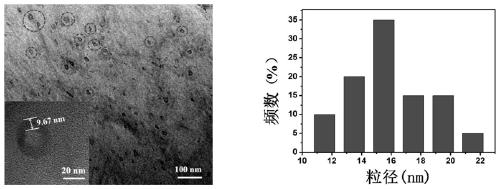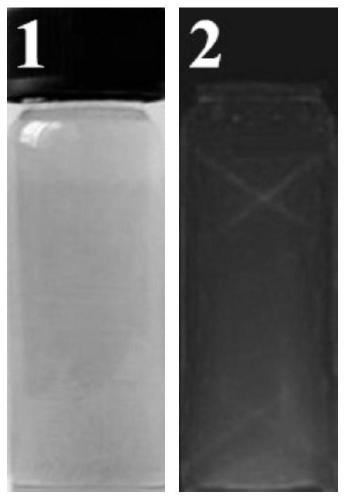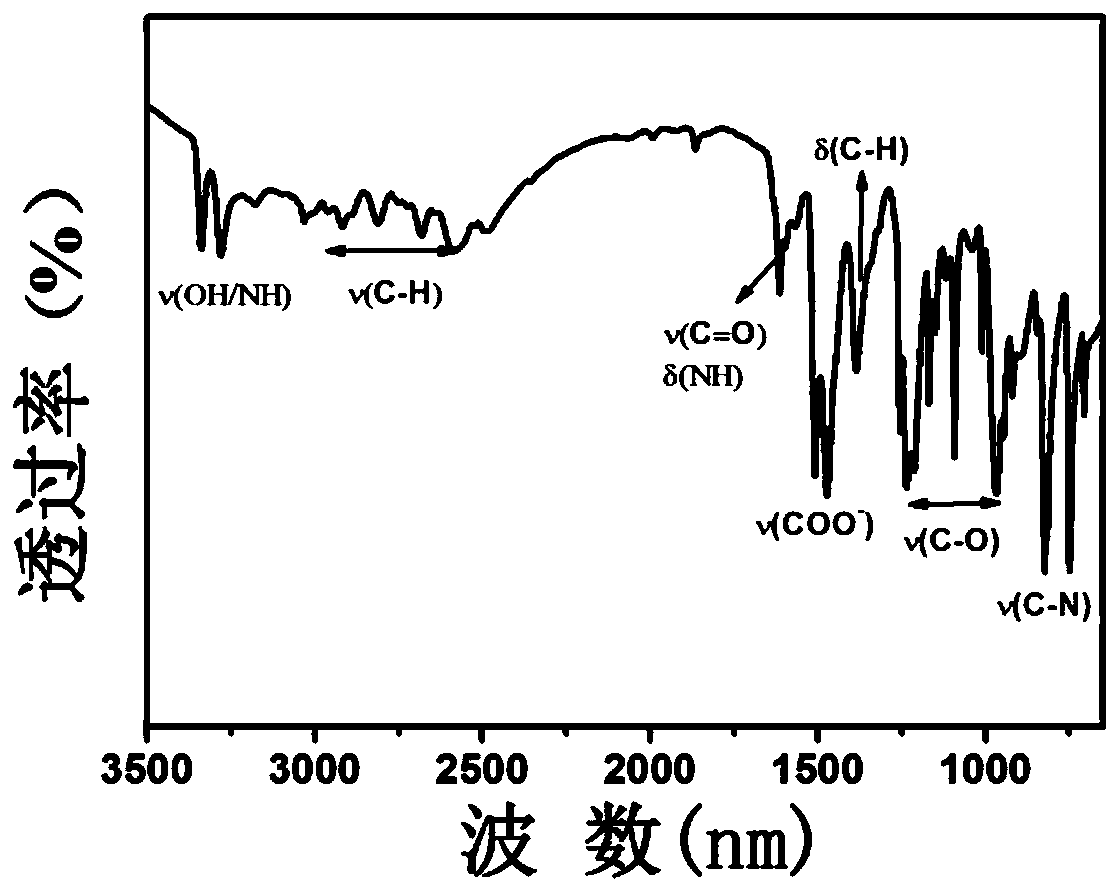Preparation method and application of hollow orange fluorescent carbon nanoparticles
A carbon nanoparticle, orange technology, applied in the direction of fluorescence/phosphorescence, chemical instruments and methods, luminescent materials, etc., to achieve the effect of broad application prospects
- Summary
- Abstract
- Description
- Claims
- Application Information
AI Technical Summary
Problems solved by technology
Method used
Image
Examples
Embodiment 1
[0027] Preparation of hollow orange fluorescent carbon nanoparticles:
[0028] (1) Add 0.2g of 5-aminosalicylic acid to 20mL of deionized water to obtain a suspension;
[0029] (2) Transfer the suspension obtained in (1) to a hydrothermal reaction kettle, and conduct a hydrothermal reaction at 220° C. for 4 hours;
[0030] (3) Centrifuge the product obtained in (2) with a centrifuge at 4000r / min for 20min to remove insoluble matter to obtain a clear brown solution, dialyze for 24h with a dialysis bag with a molecular weight cut-off of 500-1000Da, and obtain a hollow orange fluorescent carbon nanoparticle aqueous solution ;
[0031] (4) Freeze-dry the aqueous solution of hollow orange fluorescent carbon nanoparticles obtained in (3) to obtain hollow orange fluorescent carbon nanoparticles, and the fluorescence quantum yield (based on rhodamine B) is 6.9%.
[0032] The transmission electron microscope images and size distribution images of the prepared hollow orange fluorescen...
Embodiment 2
[0039] Preparation of hollow orange fluorescent carbon nanoparticles:
[0040] (1) Add 0.4g of 5-aminosalicylic acid to 20mL of deionized water to obtain a suspension;
[0041] (2) Transfer the suspension obtained in (1) to a hydrothermal reaction kettle, and conduct a hydrothermal reaction at 200° C. for 5 hours;
[0042] (3) Centrifuge the product obtained in (2) with a centrifuge at 4000r / min for 20min to remove insoluble matter to obtain a clear brown solution, dialyze for 24h with a dialysis bag with a molecular weight cut-off of 500-1000Da, and obtain a hollow orange fluorescent carbon nanoparticle aqueous solution ;
[0043] (4) Freeze-dry the aqueous solution of hollow orange fluorescent carbon nanoparticles obtained in (3) to obtain hollow orange fluorescent carbon nanoparticles, and the fluorescence quantum yield (based on rhodamine B) is 4.7%.
Embodiment 3
[0045] Preparation of hollow orange fluorescent carbon nanoparticles:
[0046] (1) Add 0.1 g of 5-aminosalicylic acid to 20 mL of deionized water to obtain a suspension;
[0047] (2) Transfer the suspension obtained in (1) to a hydrothermal reaction kettle, and conduct a hydrothermal reaction at 230° C. for 3 hours;
[0048] (3) Centrifuge the product obtained in (2) with a centrifuge at 4000r / min for 20min to remove insoluble matter to obtain a clear brown solution, dialyze it with a dialysis bag with a molecular weight cut-off of 500-1000Da for 18h, and obtain a hollow orange fluorescent carbon nanoparticle aqueous solution ;
[0049] (4) Freeze-dry the aqueous solution of hollow orange fluorescent carbon nanoparticles obtained in (3) to obtain hollow orange fluorescent carbon nanoparticles, and the fluorescence quantum yield (based on rhodamine B) is 3.3%.
PUM
 Login to View More
Login to View More Abstract
Description
Claims
Application Information
 Login to View More
Login to View More - R&D
- Intellectual Property
- Life Sciences
- Materials
- Tech Scout
- Unparalleled Data Quality
- Higher Quality Content
- 60% Fewer Hallucinations
Browse by: Latest US Patents, China's latest patents, Technical Efficacy Thesaurus, Application Domain, Technology Topic, Popular Technical Reports.
© 2025 PatSnap. All rights reserved.Legal|Privacy policy|Modern Slavery Act Transparency Statement|Sitemap|About US| Contact US: help@patsnap.com



